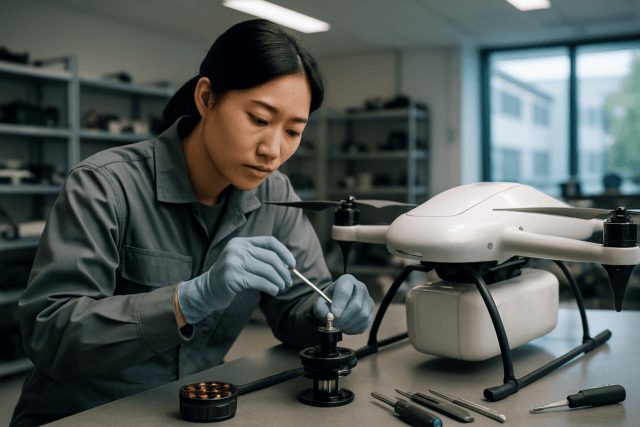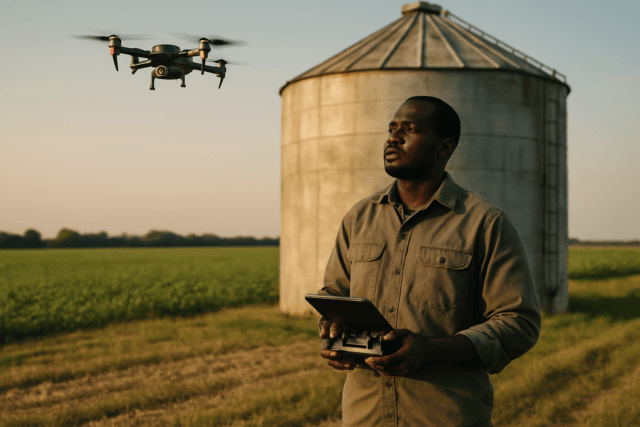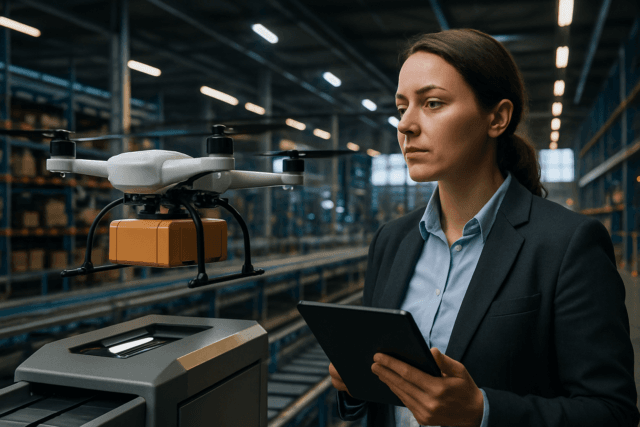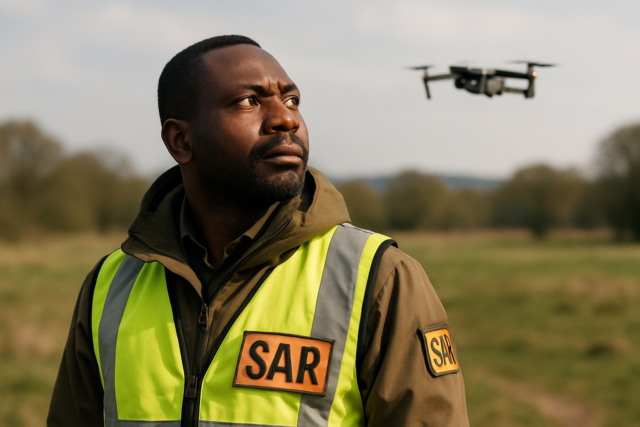The night sky, once the exclusive canvas for fireworks, is now being transformed into a dynamic and mesmerizing spectacle by drone light shows. These choreographed aerial ballets, featuring hundreds or even thousands of illuminated drones, create breathtaking images, animations, and narratives that captivate audiences worldwide. But how are these intricate performances brought to life? The magic lies in the meticulous development of custom flight paths, a sophisticated process that blends artistic vision with advanced technology and precise engineering.
The Art and Science of Drone Choreography
Developing custom flight paths for drone light shows is a multifaceted discipline that combines creative design with rigorous technical planning. Each drone acts as a pixel in a vast aerial display, and their synchronized movements are orchestrated to form complex 2D and 3D patterns, logos, and animations. This requires a deep understanding of both aesthetic principles and the technical capabilities and limitations of the drone fleet.
Conceptualization and Storyboarding
The journey begins with a creative vision, often driven by the event’s theme, audience, and desired message. Designers start by translating ideas into a storyboard, a visual representation of the entire drone light show. This includes outlining the desired images, patterns, and transitions, much like planning scenes in a film. This initial phase helps to visualize the show’s flow and ensures that the narrative or message is conveyed effectively. Designers experiment with different color schemes and lighting effects, considering how these elements will appear against the night sky.
Designing Visuals and Animations
Once the storyboard is approved, designers move to creating the actual visuals and animations. This involves using advanced 3D animation software, such as Blender, Houdini, or Cinema 4D, to craft the intricate movements, shapes, and patterns that the drones will form. During this stage, every drone’s position, movement, and light changes are meticulously mapped out to ensure perfect synchronization and a visually cohesive experience. The software also allows for the integration of LED lighting effects, playing with color nuances, synchronizing with music, and varying intensities to enhance the visual impact.
Programming the Aerial Ballet: Software and Algorithms
The heart of custom flight path development lies in the sophisticated software and algorithms that translate artistic designs into precise flight commands for each drone. This is where the magic of choreography meets the precision of aviation technology.
Specialized Drone Show Software
A range of specialized drone show software solutions are essential for orchestrating these complex aerial displays. These platforms allow designers to manage hundreds or even thousands of drones, transforming graphical animations into detailed flight paths. Key software platforms in the industry include:
- Drone Harmony: Known for its ease of use in creating impressive aerial routines, allowing users to focus on creative ideas rather than technical complexities. It facilitates planning flight paths and syncing light effects seamlessly, and its simulation feature allows for testing and refining shows in a safe virtual environment.
- UgCS: A robust platform for advanced drone flight planning and control, offering features beyond light shows, such as aerial surveying. For drone light shows, it provides mission planning tools to adjust flight paths precisely and real-time telemetry data for monitoring drone status.
- Skybrush Suite: An open-source option that helps users turn ideas into aerial displays, making professional drone shows more accessible. Skybrush Studio, a component, offers an intuitive interface for creating detailed performances, allowing users to design flight paths, synchronize lighting with music, and preview shows in 3D. A plugin for Blender is also available, allowing users to create animations and LED sequences.
- AEROMOTUS (Drone Show Software by SPH Engineering): This was the first commercially available software for drone swarm flight path management and payload control. It features 2D and 3D views, a plugin to convert 3D animations into drone flight paths, and a detailed telemetry overview. It can control thousands of drones simultaneously.
These software solutions often include visual programming environments, allowing users to construct flight paths and formations using drag-and-drop interfaces, which lowers the barrier to entry for artists without extensive programming knowledge.
Flight Path Generation and Optimization
Once the visual design is complete, the software calculates individual flight paths for each drone. This critical step ensures that drones maintain safe distances, avoid collisions, and execute the choreography with pinpoint accuracy. Algorithms are employed to design paths for individual drones, ensuring smooth transitions and seamless formations.
Key considerations during flight path generation include:
- Collision Avoidance: Drones must be programmed to avoid collisions with each other and any environmental obstacles. This is often achieved through sophisticated algorithms that incorporate obstacle-avoidance path planning.
- Synchronization: Each drone’s movement and light changes must be precisely synchronized with the others and, often, with accompanying music or other cues. Real-time control systems are crucial for dynamically managing and adjusting drone behavior during live performances.
- Efficiency: Path planning aims to minimize total flight distance and time, optimizing battery life and ensuring the show’s duration can be sustained.
- 3D Space Utilization: For truly unique patterns, the software must manage drone movements in three-dimensional space, creating depth and dynamic effects.
The Role of Drone Hardware and Ground Control
The capabilities of the drones themselves and the ground control infrastructure are fundamental to executing complex flight paths.
Specialized Drone Systems
Drones used in light shows are typically lightweight mini UAVs, equipped with high-intensity RGB LED lights capable of displaying multiple colors and adjusting brightness according to programmed sequences. Critical features include:
- High-Precision GPS/GNSS: Real-Time Kinematic (RTK) GPS technology is often used to provide centimeter-level accuracy, crucial for maintaining safe distances and executing intricate formations.
- Flight Control Systems: These systems ensure that each drone maintains its position and follows its pre-programmed path without deviation. Modern systems may use AI-driven algorithms to improve swarm interaction and autonomous collision avoidance.
- Communication Networks: Drones must communicate continuously with each other and a central ground control system to ensure they perform in unison.
Ground Control Station and Testing
A central ground control system, operated by skilled pilots, communicates wirelessly with each drone, monitoring their position, altitude, speed, and battery life. Before a live performance, the entire show is rigorously tested through simulations in a virtual environment. This allows designers and operators to test visuals, choreography, and timing, making necessary adjustments before actual flight. Pre-flight checks also involve ensuring drone batteries are fully charged, assessing weather conditions, and verifying the functionality of all drones.
Challenges and Future Innovations in Drone Light Shows
Despite the advancements, developing and executing drone light shows comes with its own set of challenges, while also promising exciting future innovations.
Current Challenges
- Communication Latency and Signal Interference: Delays in sending or receiving commands can cause drones to drift out of formation, while signal interference can disrupt synchronization.
- GPS Reliability Issues: Urban environments, magnetic interference, and even solar storms can impact GPS accuracy, potentially causing drones to deviate or collide.
- Weather and Environmental Factors: Wind, rain, and electromagnetic interference significantly affect drone stability and synchronization, necessitating careful planning and sometimes cancellation.
- Computational Demands: Path planning for hundreds or thousands of drones in real-time requires significant computational power and complex algorithms for task assignment and obstacle avoidance.
- Regulatory Compliance: Navigating legal and regulatory requirements for operating drone swarms in public spaces adds a layer of complexity.
Future Innovations
The future of drone light shows is bright, with ongoing advancements promising even more spectacular and interactive experiences.
- AI and Autonomous Flight: Further integration of AI and autonomous flight technology will enhance the spectacle and efficiency, allowing for more complex performances and greater flexibility in operations. AI-driven algorithms will improve drone interaction, collision avoidance, and the ability to maintain intricate formations.
- Interactive Displays: Innovations are leading to interactive drone shows where audiences can influence patterns and designs in real-time through movements, voice, or touch, creating a truly immersive experience.
- Enhanced Realism and Storytelling: As technology matures, drone shows will move beyond simple graphics to sophisticated choreography that allows for vastly more potential for storytelling in the sky. This includes vivid 3D effects and the integration with augmented reality.
- Advanced Hardware: Drones will continue to evolve with different lighting elements, effects, and improved battery life, enabling longer and brighter shows.
Developing custom flight paths for unique drone light show patterns is a testament to human ingenuity, blending artistic expression with cutting-edge aviation technology. As the field continues to evolve, these aerial ballets are set to redefine entertainment, transforming our night skies into limitless canvases for creative storytelling and technological marvels.





